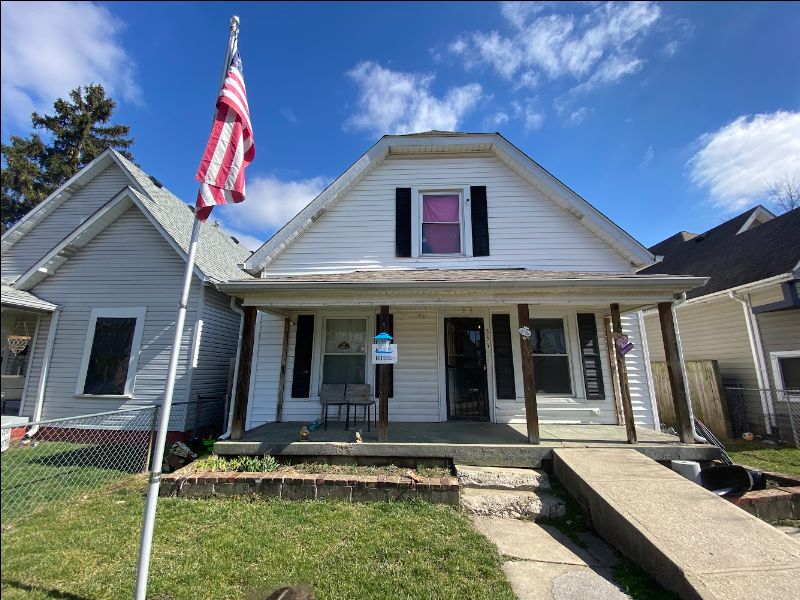Investment Properties Indianapolis
Are you interested in Investment Properties in Indianapolis and consulting or considering a rental property? If so, before you contact a real estate consultant, you may be wondering exactly how you determine if your real estate rental property is successful. Basically, you are interested in knowing what type of return you can get on your real estate investment. This is commonly called Return On Investment (ROI). It’s a reasonable question to ask before you put money into any type of real estate investment.
How Do I Calculate ROI?
ROI is a financial ratio that is used to measure the full profitability of a real estate investment. A real estate consulting firm can help you calculate ROI. A consultant will explain that ROI is calculated as a percentage by dividing the net profit of an investment by the cost of the investment.
There are different ways that real estate investors calculate the return on a real estate investment. For rental properties, three main measurements determine what kind of return you will see: monthly cash flow, annual yield, and cap rates.
The simplest way to calculate the ROI is first to determine the net profit. The way you do this is to calculate all the money earned from the investment and subtract the cost of the investment from that amount. An example is if you invested $30,000 in a real estate property and earned $34,000. Your net profit is $4,000.
Once you have that amount, you then divide the net profit by the entire cost of the investment. $4,000 divided by $34,000 times 100 equals 11.7%, rounded up to 12% ROI.

What Is Monthly Cash Flow?
Monthly cash flow is the amount of money that comes and goes through your business during a set period of time. The typical period is usually one month. When you are determining the cash flow of a real estate investment, you are looking at every source of income. These sources include investments, salaries, rental income, and expenses. The expenses could include rent, bills, and living expenses.
When you determine your monthly cash flow, you get a clear understanding of your financial situation. This gives you the ability to make informed decisions about budgeting, saving, and investing. When you have a positive monthly cash flow, it lets you know that you are earning more than you are spending. When you have a negative monthly cash flow, it indicates that you are spending more money than you make. Investment Properties Indianapolis.
What Is an Annual Yield?
An annual yield is also called an annual return. The name refers to the percentage of profit or loss that a real estate investment generates over the course of one year. Calculate the annual yield by dividing the total return on an investment by the initial investment amount. After that, multiply the result by 100 to turn it into a percentage. An example of this is if you invest $30,000 in real estate and you have a return of $3,000, a 10% annual yield.
Understanding the annual yield is a critical measure of the performance of any real estate investment. This is because it allows real estate investors to compare the returns of different investments on an equal basis. It may also be used by analysts and financial advisors to evaluate the profitability and risk of investment portfolios.

What Are Cap Rates?
Cap rates are an abbreviation for capitalization rates. They are a financial metric that is used to evaluate the profitability of a real estate investment property. Cap rates represent the ratio of a property’s net operating income (NOI) to the market value. These rates are expressed as percentages and calculated by dividing the NOI by the property’s market value.
An example of cap rates is if the net operating income is $50,000, the market value is $1,000,000 on the real estate property. You divide $50,000 by $1,000,000 and multiply by 100. This equals a 5% cap rate.
Cap rates are used by many different types of individuals, such as real estate investors and appraisers. They are also used to determine the potential return on investment for a real estate property. Cap rates can also be used to compare the value of different real estate properties in a particular market. The higher the cap rates, the higher the potential return on investment. On the other hand, lower cap rates indicate lower potential returns on your real estate.
It’s important to keep in mind that cap rates are not the only factor to consider when evaluating a real estate property. You want to evaluate other factors, including location, market conditions, and financing options, which can also affect its profitability.

Why Do Cap Rates & Cash-on-Cash Return Matter?
These measurements matter because they can help you compare any potential investment real estate opportunities. A good example of how these measurements work for you is when you are comparing two different real estate properties that you want to purchase. If the properties seem to be the same in every way, including condition, maintenance costs, repair costs, and projected rent, you may not know which one is the better investment. The property that has a higher cap rate is the better option because it typically means lower cost but higher income.
When you want to compare your real estate property rental returns with another type of investment, cash-on-cash returns are helpful for that task. When you calculate the cash returns on both the rental property and other investments, you are able to compare them and choose the best real estate option. Cash-on-cash return is another name for cash flow. It’s often calculated using annual pre-tax cash flow. Therefore, it’s an ideal measurement to compare different things. First, it can measure the profitability of different real estate investment properties. Second, it can also be used to determine whether a property is generating enough cash flow to cover its expenses. And, in the end, provide a reasonable return as a real estate investment.

What’s a Good ROI for a Rental Property?
While there isn’t a right answer to this question, there is a good range that you want to be within when you are seeking a return on your real estate investment. You want to aim for a return of about 5% to 10%. These percentages are reasonable returns for a rental property. These percentages include a cushion for repairs and vacancies. If you have a property that returns 10%, that’s a great deal. This is presuming you’ve used appropriate estimates for rent and expenses.
Before you consider buying a potential real estate rental investment property, you can contact real estate consultants to help review estimated numbers in a rental income calculator. That is to help you determine if it’s a good real estate investment for you. If you think this is an investment that looks promising and something you want to investigate further, a consulting agency can help you find the best numbers. Plus, they are accurate, and you can make the best decision possible.
When you are interested in Indianapolis real estate investing and consulting services, potential clients can work with a knowledgeable real estate consultant by taking steps to Invest With Ben on an advisory basis.